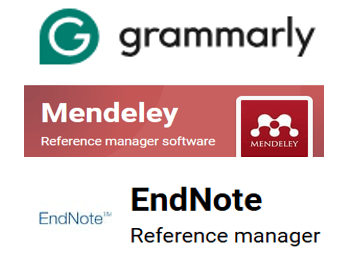The Effect of Leishmania mexicana growth phase on MHC class I down regulation
DOI:
https://doi.org/10.37375/sjfssu.v4i2.2654Keywords:
Leishmania parasite, MHC class I, virulence, down-regulationAbstract
The histocompatibility complex (MHC) system is important in immunity to intracellular pathogens such as Leishmania parasites. MHC-I expression is regulated after the infection, and it is a pivotal mechanism used by intracellular pathogens to evade the immune response. Very little is known about this mechanism of Leishmania infection. In this study, the infection with different growth phases of Leishmania mexicana effect on MHC-I expression was evaluated in human cell line U937 and MonoMac-6 by flow cytometry. The results clearly show a wide range of MHC-I downregulation due to the infection of human cells with different phases of L. mexicana. MHC-I expression was significantly (P<0.05) downregulated when U937 and MonoMac-6 cells were infected with mid log stage at a ratio of 1:10 (cell:parasite), compared to infection with late and stationary phases. The results illustrated that MHC-I expression was down regulated from 88% in control cells to 79.00%, 45.08%, and 1.74% at infection ratios of 1:10, 1:20, and 1:30, respectively. Therefore, the degree of MHC-I downregulation was parasite dosage dependent. The normal MHC-I appearance in parasite infected cells was partially restored after adding fungizone, an anti Leishmania agent. In conclusion, the previously documented fluctuations in MHC-I expression responses to Leishmania infection may relate to differences in the parasite's development stages and infection dose.
References
Abendroth, A. S., B., Lee, E., Mellins, E., Wallace, M. and Arvin, A.M (2000): Modulation of major histocompatibility class II protein expression by varicella-zoster virus. Journal of Virology.74 (4) 1900-1907.
Ali, K. S., Rees, R. C., Terrell‐Nield, C., & Ali, S. A (2013): Virulence loss and amastigote transformation failure determine host cell responses to Leishmania Mexicana Parasite immunology. 35(12) 441-456.
Ali, S., Rezvan, H., McArdle, S., Khodadadi, A., Asteal, F. and Rees, R. (2009): CTL responses to Leishmania mexicana gp63‐cDNA vaccine in a murine model. Parasite Immunology. 31 (7) 373-383.
Antoine, J.C., Jouanne, C., Lang, T., Prina, E., de Chastellier, C. and Frehel, C (1991): Localization of major histocompatibility complex class II molecules in phagolysosomes of murine macrophages infected with Leishmania amazonensis. Infection and Immunity. 59 (3) 764-775.
Asteal, Fathia. 2011. A study of immune responses to L. mexicana antigens and immunogenicity of L. donovani cen-3. PhD thesis, Nottingham Trent University, United Kingdom, 150p.
Bertoletti, A., and Gehring, A.J. (2006): The immune response during hepatitis B virus infection. The Journal of General Virology. 87 (6) 1439-1449.
De Souza Leao, S., Lang, T., Prina, E., Hellio, R. and Antoine, J.C. (1995): Intracellular Leishmania amazonensis amastigotes internalize and degrade MHC class II molecules of their host cells. Journal of Cell Science. 108 (10) 3219-3231.
Ellner, J.J., and Daniel, T.M. (1979): Immunosuppression by mycobacterial arabinomannan. Clinical and Experimental Immunology. 35 (2) 250-257.
Hossein Rezvan, Selman A Ali, and Sahar Hamoon Navard. (2022): Inhibitory Effects of Leishmania Mexicana Infection on MHC-I Expression in Bone Marrow Derived Dendritic Cells. Iran J Parasitol. 17(4): 562–572
Isnard, A., Shio, M.T. and Olivier, M. (2012): Impact of Leishmania metalloprotease GP63 on macrophage signaling. Frontiers in Cellular and Infection Microbiology. 2 (72) 1-17.
Kwan, W.C., McMaster, W.R., Wong, N. and Reiner, N.E. (1992): Inhibition of expression of major histocompatibility complex class II molecules in macrophages infected with Leishmania donovani occurs at the level of gene transcription via a cyclic AMP-independent mechanism. Infection and Immunity. 60 (5) 2115-2120.
Lang, T., de Chastellier, C., Frehel, C., Hellio, R., Metezeau, P., Leao Sde, S. and Antoine, J.C. (1994): Distribution of MHC class I and of MHC class II molecules in macrophages infected with Leishmania amazonensis. Journal of Cell Science, 1994; 107 (1) 69-82.
Lang, T., Hellio, R., Kaye, P.M. and Antoine, J.C. (1994): Leishmania donovani infected macrophages: characterization of the parasitophorous vacuole and potential role of this organelle in antigen presentation. Journal of Cell Science. 107 (8) 2137-2150.
Le Gall, S., Erdtmann, L., Benichou, S., Berlioz-Torrent, C., Liu, L., Benarous, R., Heard, J. and Schwartz, O. (1988): Nef interacts with the μ subunit of clathrin adaptor complexes and reveals a cryptic sorting signal in MHC I molecules. Immunity. 8 (4) 483-495.
Luder, C., Lang, T., Beuerle, B. and Gross, U. (1998): Down-regulation of MHC class II molecules and inability to up-regulate class I molecules in murine macrophages after infection with Toxoplasma gondii. Clinical and Experimental Immunology. 112 (2) 308-316.
Lüder, C.G., Lang, C., Giraldo-Velasquez, M., Algner, M., Gerdes, J. and Gross, U. (2003): Toxoplasma gondii inhibits MHC class II expression in neural antigen-presenting cells by down-regulating the class II transactivator CIITA. Journal of Neuroimmunology. 134 (1) 12-24.
Ma, J., Trop, S., Baer, S., Rakhmanaliev, E., Arany, Z., Dumoulin, P., Levitskaya, J. (2013): Dynamics of the major histocompatibility complex class I processing and presentation pathway in the course of malaria parasite development in human hepatocytes: implications for vaccine development. PloS one. 8 (9) 1-18.
Muller, I., Kropf, P., Etges, R.J. and Louis, J.A. (1993): Gamma interferon response in secondary Leishmania major infection: role of CD8+ T cells. Infection and Immunity. 61 (9) 3730-3738.
Peterlin, B.M., and Trono, D. H. (2003): Shield and strike back: how HIV-infected cells avoid immune eradication. Nature Reviews Immunology. 3 (2) 97-107.
Petersen, J.L., Morris, C.R. and Solheim, J.C. (2003): Virus evasion of MHC class I molecule presentation. Journal of Immunology. 171 (9) 4473-4478.
Prina, E., Antoine, J.C., Wiederanders, B. and Kirschke, H. (1990): Localization and activity of various lysosomal proteases in Leishmania amazonensis-infected macrophages. Infection and Immunity. 58 (6) 1730-1737.
Rappocciolo, G., Birch, J. and Ellis, S.A. (2003): Down-regulation of MHC class I expression by equine herpesvirus-1. The Journal of General Virology. 84 (2) 293-300.
Rehermann, B. (2003): Immune responses in hepatitis B virus infection. Semin Liver Dis. 23 (1) 021-038
Reiner, N.E., Ng, W. and McMaster, W.R. (1987): Parasite-accessory cell interactions in murine leishmaniasis. II. Leishmania donovani suppresses macrophage expression of class I and class II major histocompatibility complex gene products. Journal of Immunology. 138 (6) 1926-1932.
Rivera-Fernández I, Argueta-Donohué J, Wilkins-Rodríguez AA, Gutiérrez-Kobeh L.(2019): Effect of two different isolates of Leishmania mexicana in the production of cytokines and phagocytosis by murine dendritic cells. J Parasitol;105(2):359–70
Rodrigues, M. M., Boscardin, S. B., Vasconcelos, J. R., Hiyane, M. I., Salay, G., Soares, I. S. (2003): Importance of CD8 T cell-mediated immune response during intracellular parasitic infections and its implications for the development of effective vaccines. Anais da Academia Brasileira de Ciências. 75(4) 443-468.
Russell, D.G., Xu, S. and Chakraborty, P. (1992): Intracellular trafficking and the parasitophorous vacuole of Leishmania mexicana-infected macrophages. Journal of Cell Science. 103 (4) 1193-1210.
Sarah Mann, Katherine Frasca, Sara Scherrer, Andrés F. Henao-Martínez, Sabrina Newman, Poornima Ramanan & José A Suarez (2021): A Review of Leishmaniasis: Current Knowledge and Future Directions. Current Tropical Medicine Reports. 8:121–132
Schaible, U.E., Schlesinger, P.H., Steinberg, T.H., Mangel, W.F., Kobayashi, T. and Russell, D.G. (1999): Parasitophorous vacuoles of Leishmania mexicana acquire macromolecules from the host cell cytosol via two independent routes. Journal of Cell Science. 112 (5) 681-693.
Schwartz, O., Maréchal, V., Le Gall, S., Lemonnier, F. and Heard, J. (1996): Endocytosis of major histocompatibility complex class I molecules is induced by the HIV–1 Nef protein. Nature Medicine. 2 (3) 338-342.
Shrestha, B., and Diamond, M.S. (2004): Role of CD8+ T cells in control of West Nile virus infection. Journal of Virology. 78 (15) 8312-8321.
Silva-Almeida, M., Pereira, B., Ribeiro-Guimarães, M.L. and Alves, C.R. (2012): Proteinases as virulence factors in Leishmania spp. infection in mammals. Parasites & Vectors. 5 (1) 1-10.
Wozencraft, A.O., and Blackwell, J.M. (1987): Increased infectivity of stationary-phase promastigotes of Leishmania donovani: correlation with enhanced C3 binding capacity and CR3-mediated attachment to host macrophages. Immunology. 60 (4) 559-563.
Zipfel, P.F., Würzner, R. and Skerka, C. (2007): Complement evasion of pathogens: common strategies are shared by diverse organisms. Molecular Immunology.44 (16) 3850-3857.
Downloads
Published
How to Cite
Issue
Section
License
Copyright (c) 2024 Scientific Journal for Faculty of Science-Sirte University

This work is licensed under a Creative Commons Attribution 4.0 International License.














